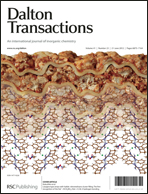The molecular geometries, electronic structures, and excitation energies of tin and lead phthalocyanine compounds, SnPc, PbPc, Sn(Pc)2, and Pb(Pc)2, were investigated using the B3LYP method within a framework of density functional theory (DFT). The geometries of SnPc, PbPc, Sn(Pc)2, and Pb(Pc)2 were optimized under C4v, C4v, D4d, and D4d molecular symmetries, respectively. The excitation energies of these molecules were computed by the time-dependent DFT (TD-DFT) method. The calculated results for the excited states of three compounds other than the unknown Pb(Pc)2 corresponded well with the experimental results of electronic absorption spectroscopy. The non-planar C4v molecular structure of SnPc and PbPc influences especially on the orbital energy of the HOMO−1 through mixing of the s-type atomic orbital of the central metal atom to the π system of the Pc ring in an anti-bonding way; however, the HOMO and the LUMO have little effect of the deviation from the planar structure because they have no contribution from the atomic orbital of the central metal. This orbital mixing pushes up the orbital energy of the HOMO−1, and reduces the energy of the metal-to-ligand charge transfer band of SnPc and PbPc. The calculated results also reproduced well the excitation profile of Sn(Pc)2, which was quite different from that of SnPc. The strong interactions between the π-type orbitals of two Pc moieties altered the electronic structure resulting in the characteristic excitation profile of Sn(Pc)2. In addition, this caused a reduction of about 0.8 eV in the ionization potential as compared to usual MPcs including SnPc, which was consistent with the experimental results.


 Please wait while we load your content...
Please wait while we load your content...